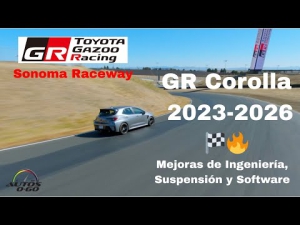Give Your New Edge Mustang Coilover Suspension
While the S550 certainly broke a debilitating pattern in subpar Mustang suspension, older generations weren’t quite as responsive as others in its class. The mid-70s Mustangs used double wishbone suspension in the front, which helped a great deal, but it was still lagging behind some of its European counterparts. Luckily, modern tuning companies have created solutions for owners of virtually every generation Mustang. After tackling some preventative maintenance, look into coilover suspension.
What is coilover suspension?
Traditional Mustang suspension has its spring separated from its shock. It’s simple, but not quite as elegant as other more advanced options. A coilover front suspension has the shock perched inside of the spring. This allows a mechanic, or whomever, to adjust the ride height and, depending on the kit, the rebound, and compression. It’s complicated and might need expert input, but offers multiple options for dialing in the suspension to where it’s just right.
Coilover kits can come with camber/caster plates as well, in order for the driver to adjust the (you guessed it) camber and caster. Kits can run less than $1,000, however, those kits typically invite low-quality parts. The best sets run $3,000 or more, depending on the options. Some manufacturers will offer a paint finish on the camber/caster plates, which costs extra. Also, some kits include the rear suspension as well, which can hike up the price as well. After all, why wouldn’t someone get both front and rear coilover suspension? Maximum Motorsports makes some highly-regarded kits only for Mustangs, which run near $2,000.
What about the Mustang rear end?
Suspension shops build rear coilover kits for Mustangs as well as front kits, but it may not be necessary. A Mustang’s rear suspension contends with a solid rear axle, so beyond adjusting the ride height, compression and rebound might not make enough of a difference to make the kit worth the install. Mustang owners sometimes opt out of the rear coilover kits, and instead settle for lowering springs and decent shocks. Some kits also don’t fit quite right, and to make them fit would require some cutting and welding.
Changing the rear suspension entirely
If a person was intent on installing rear coilovers and wanted to extract every penny out of it, they could opt for the rear suspension from a 1999-2004 Cobra. This generation Cobra had independent rear suspension and being that Mustangs used the same chassis from 1994-2004, the IRS will fit in any of these years. Once again, it’s up to the owner and what they want to do with the car, as many opt to stick with the solid axle for its simplicity and durability.
Figure out what you want to do with the car
Figuring out the car’s main purpose is paramount to deciding what suspension to buy. If a New Edge Mustang GT is the only option, and it needs to be able to attack corners at a racetrack, then finding a Cobra or its rear suspension, plus a set of coilovers for all four corners may be the best trek. For street driving, rear coilovers may not be necessary. A front kit, however, could make a massive difference for daring mountain passes.
RELATED: The One Car Killed In 2020 We’ll Miss Most In 2021
The post Give Your New Edge Mustang Coilover Suspension appeared first on MotorBiscuit.







